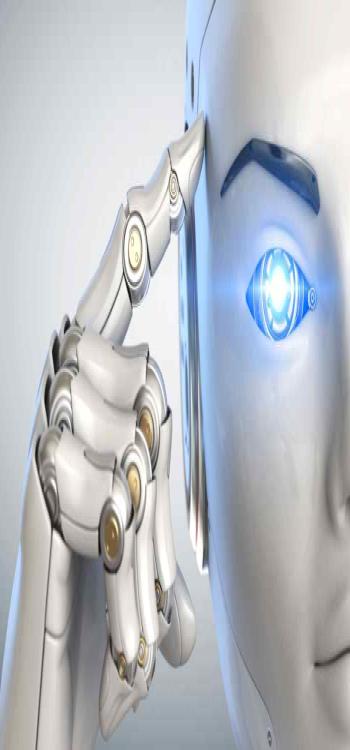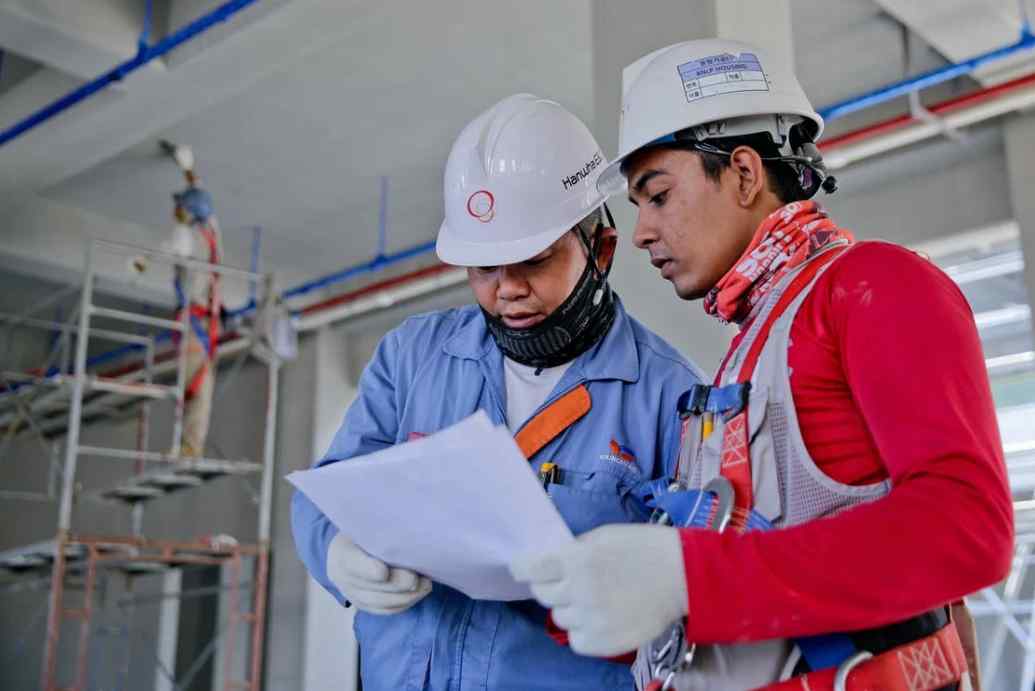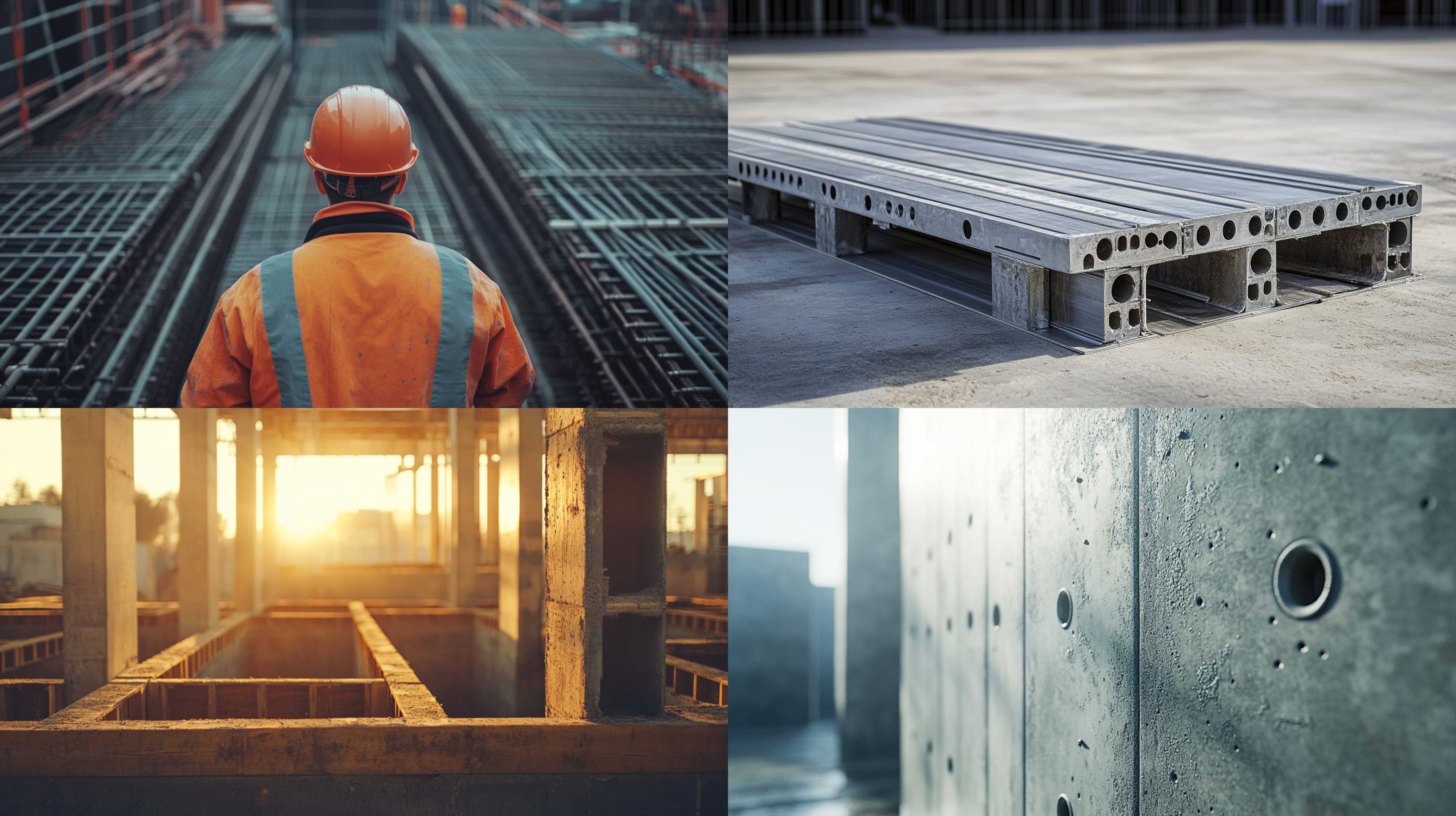Table of Contents
Get End-to-end Assistance in Buying a Property

Buyer Benefits Worth Rs.2 Lakh

Complete Property Legal Assistance

Get up to 90% of Property Funding

Up to 25% Off on Home Interior
Loved what you read? Share it with others!


Submit the Form to Unlock the Best Deals Today
Check Your Eligibility Instantly

Experience The NoBrokerHood Difference!
Set up a demo for the entire community

Tenant Super Relax Plan
Enjoy Hassle-Free Renting
 Full RM + FRM support
Full RM + FRM support Instant alerts & premium filters
Instant alerts & premium filters Rent negotiation & relocation help
Rent negotiation & relocation helpWhat Is Artificial Intelligence (Ai)? And How Is It Transforming the Future of the Construction Industry?
Table of Contents
The construction business is confronted with an assortment of complex issues, including time and cost overruns, concerns about health and safety, productivity issues, and availability of labour. As a result, the industry's growth is severely hampered. The next three decades will see a rise in demand for infrastructure around the world. However, we currently only have 25 per cent of the infrastructure we'll need by 2050. The construction sector is struggling to address its current challenges because it is one of the minor digital businesses in the world. Without a doubt, the Construction and Infrastructure (C&I) sector has made some percentage of their share of digital gains, but very few businesses have been able to grow beyond specific pilot projects due to the following three obstacles: Project execution is decentralised, and deployment rests on the project managers; each project is seen as unique, and non-digitised processes threaten access to consistent and prepped statistical documentation. Artificial intelligence, or AI, is a cutting-edge digital technology currently undergoing a revolution across various business sectors, including retail, manufacturing, and telecommunications. Machine learning, knowledge-based systems, machine vision, robotics, and optimisation are just some of the AI specialisations that have been effectively implemented in other sectors to boost profits, efficiencies, and security. The construction industry has seen a similar surge in the popularity of AI over the past five years.

However, despite the industry's growing recognition of AI's potential, many AI-related obstacles remain. Let's get a better understanding of this in depth.
What is AI, or "artificial intelligence"?

AI is the simulation of human intelligence in machines; that is, the ability of those machines to reason and behave like humans. Artificial intelligence can also describe any device showing signs of intelligence similar to the human brain.
Get End-to-end Assistance in Buying a Property

Buyer Benefits Worth Rs.2 Lakh

Complete Property Legal Assistance

Get up to 90% of Property Funding

Up to 25% Off on Home Interior
To achieve a goal, artificial intelligence should think critically and behave in ways that maximise the likelihood of success. Machine learning (ML) is a subfield of AI that centres on machines' ability to pick up new information and improve upon it without any direct human involvement. Deep learning methods make this kind of autonomous learning possible, enabling computers to learn from large amounts of unstructured data.
How does Artificial Intelligence work?
Robots are typically the first thing that comes to mind when hearing "artificial intelligence." The reason for this is the common theme in science fiction and fantasy media of humanoid robots wreaking havoc on Earth. The opposite is true.
The foundation of AI is the idea that human intellect can be precisely described so that a machine can successfully imitate it and carry out activities ranging from the most basic to the most complex. One of the main points of AI is to make things that are like human brains but better. Regarding the degree to which behaviours such as learning, reasoning, and perception can be concretely defined, researchers and developers working on the subject are making unexpectedly significant progress in simulating these functions. Some people think that in the not-too-distant future, technology will allow developers to create systems that can learn and reason about anything better than a human being can. The value judgments that permeate every aspect of cognition are what keep some people on the fence.
Previous criteria used to describe AI become antiquated as technology progresses. Machines that perform routine calculations or OCR on text are no longer considered intelligent because these capabilities are generally assumed to be part of any modern computer.
AI's steady development has benefited a wide variety of sectors. Maths, computer science, linguistics, psychology, and other fields are all leveraged in the wiring of today's sophisticated machines.
Recommended Reading

Top 26 Cleanest City of India: List of the Best Cities Ranking Wise in 2025
March 17, 2025
165230+ views

Breaking Down House Construction Costs in India: Easy Tips for Your Budget" in better way
January 31, 2025
74302+ views

Plinth Area Calculation: Inclusions and Exclusions
January 31, 2025
72318+ views

Construction Cost in Bangalore: Detailed Guide to Per Sq. Ft. Rates (2025)
January 31, 2025
67315+ views

Best Construction Companies in Bangalore to Look Out For
February 1, 2025
41708+ views
What Are the Four Forms of AI?

There are four distinct varieties of artificial intelligence distinguished from one another.
1. Relative AI - The goal of reactive AI is to maximise results from a given set of inputs. For instance, artificial intelligence that plays chess is reactive systems that optimise the most effective approach to win. In contrast to proactive AI, which can learn and adapt to new circumstances, reactive AI is typically somewhat static. Because of this, it will consistently deliver the same result if fed the same data.
2. Limited memory - Computers with artificial intelligence can learn from their own past mistakes and improve with each new piece of information it receives. In many cases, memory is short, and the number of updates is restricted (thus the name). Autonomous vehicles, for instance, can "read the road," adjust to new circumstances, and "learn" from their prior mistakes.
3. Theory-of-mind - Artificial intelligence is highly flexible and can retain vast information. Among these bits of artificial intelligence are sophisticated chatbots capable of passing the Turing Test and convincing a human that they are human. These AI are impressively advanced and technologically superior, yet they lack self-awareness.
4. Self-aware AI - Artificial intelligence that develops sentience and self-awareness is called "self-aware." Some scientists believe that AI will never achieve consciousness or "aliveness," calling such a development a fantasy.
The Current Applications of Artificial Intelligence.
The level of sophistication of the AI used in each application varies widely. It's no secret that chatbots on web pages or in the shape of smart speakers are among the most well-known applications of artificial intelligence (AI) today (e.g., Alexa or Siri). Forecasting the weather and the economy, streamlining production, and reducing duplicate cognitive labour are all areas where AI is used (e.g., tax accounting or editing). Many more applications, from video games to driverless vehicles to language processing, rely on AI.
Role Of Artificial Intelligence and Machine Learning in The Construction Industry.

AI and machine learning have great promise in the building industry. On any given day, a construction project may contain hundreds or even thousands of open issues, requests for information (RFIs), and modification orders. Consider having a helpful assistant who can sift through all the information related to your current project and send you a list of the top 10 priorities that need your immediate attention. That intelligent helper is machine learning, which may be used to pinpoint the most pressing threats to worker safety and project quality on a building site.
They say that a superintendent or project engineer must "put out fires" all day. Extremely quick to react. Machine learning is quickly gaining traction as a helpful technology that can anticipate potential problems and mitigate them before they affect a project.
Image tagging and analysis is another application that can revolutionise the building industry. For example, powerful AI is already at work in social media, automatically tagging people based on their faces with remarkable accuracy.
With little re-learning, the same AI technology may be used to detect and assess potential dangers, classify and label photos of the work site, and alert supervisors if personal protective equipment isn't being used. Tag employees and managers who are repeatedly breaking safety rules to address the issue.
Other possible uses include document organisation, drone and machine control, and design aid by sorting incoming notifications and spotting problems like disputes or missing components.
Despite the widespread adoption of AI in other design-related fields and the possibilities of AI's positive influence on architecture, architects still have mixed feelings about the concept.
All aspects of design will be altered by big data.
To review, AI is a computer programme that can mimic human intellect to complete activities like seeing, hearing, talking, thinking, and translating.
When it comes to making these kinds of decisions, AI shines in the built environment because of how well it handles large volumes of data.
While architects use historical building, construction, and design data to inform current projects, this practice is primarily unknown among industrial designers and planners.
Instantaneous access to massive amounts of historical data could significantly improve architectural design.
Five Ways AI Is Transforming Architecture

Five ways that artificial intelligence will affect the built environment are discussed below.
1. Artificial intelligence (AI) will alter fundamentals
As was alluded to earlier, AI's decision-making and recommendation-making capabilities informed by data will be indispensable to the design process, particularly in the preliminary stages of an architect's project.
An architect takes a lot of time and effort to get a project off the ground. This includes researching the design intent of the project as well as similar projects. Artificial intelligence can help with it.
Given AI's capacity to absorb vast quantities of information, architects might soon be able to do a simultaneous study on and test multiple design concepts without picking up a pen.
Take on the role of architect for a family home. This is not easy because you must consider the client's wants, the project's scope, and the design language. To top it all off, you'll need to be familiar with the building codes in your area. In terms of demographic information, you have details about the family, such as ages, genders, family sizes, etc.
Suppose architects had access to an AI system. In that case, they could compile information on zoning regulations, building codes, and accessible design, then use that information to generate a wide range of design variants that adhere to a predetermined design vocabulary and provide virtually unlimited customisation possibilities.
2. There will be a rise in the use of parametric architecture.
If you have done any research into the field of architecture, you have undoubtedly come across the term "parametric architecture." Many of your favourite architects use it as a hidden tool.
Parametric design is a system of design in which changing values of one or more parameters yields varying results, enabling the creation of novel shapes and structures that would have been impossible with more traditional approaches.
The tool functions similarly to a programming language, allowing the architect to select the desired design result, specify limitations, enter data, and quickly generate many design variants.
Parametric architecture, popularised by CAD programmes like Grasshopper, employs geometric programming and complicated algorithms to let architects change the form of a structure to suit their demands better.
By letting AI focus on its strengths, this technology frees up the architect's creativity and playtime.
3. Construction will be simpler and quicker than ever before.
When it comes to making preparations for the construction of a structure, there is no such thing as being overly organised. Bringing an architect's idea to life might take years of practice. Artificial intelligence can be a beneficial resource here.
By providing instantaneous access to massive amounts of data, facilitating the development of models, facilitating the interpretation of the built environment, and generating cost estimates, AI will significantly boost the planning process of architects. The time spent on design and construction can be reduced by quickly conveying all this data to the architect.
Artificial intelligence (AI) can help construction, so fewer people are needed to build something. Drones powered by artificial intelligence and capable of coordinating their efforts to build miniature models are still in development at MIT.
4. The proliferation of "smart cities."
Your city's current landscape may appear highly different in a few short years. Complex and time-consuming, city planning takes careful consideration over many years.
Nonetheless, one of the primary responsibilities of a city planner is to consider the interplay of a city's ecological components. Architects will have to reevaluate their methods in light of the advent of AI-powered smart cities.
In the future, cities will be powered by real-time data and feedback, allowing them to interact with one another like living organisms. Buildings, mobile devices, automobiles, and public spaces will all work together to enhance the quality of life, reduce waste, boost security, and decrease congestion. This pattern is visible in some of the most progressive metropolises on Earth.
5. The influence of AI on the domestic sphere
Suppose an architect is serious about creating the ideal home for their clients. In that case, they must now consider how artificial intelligence (AI) might be included in the design process and how AI might improve homeowners' quality of life.
Just as AI has unlocked the doors to the smart city, it will do the same for the smart home, transforming our dwellings into complex, data-driven living beings.
Effects of Artificial Intelligence on Smart Homes

Homes may be immense energy and water waste when not planned correctly. This is especially difficult in developing countries with low salaries and scarce resources. Even in environmentally conscious dwellings, residents' actual energy and water consumption may wind up being higher than predicted. The ability of a homeowner to make their mortgage payments each month might be impacted negatively by rising costs.
However, a solution may be found at the junction of AI and human behaviour. Smart home technologies that improve home appliances, security, lighting, and entertainment are already in use as part of the solution.
Smart home devices powered by artificial intelligence may be able to communicate with one another and gather new data to understand consumer behaviour better. The information is utilised to foresee how users will behave and increase situational awareness, which is the knowledge of how to accommodate users' preferences by adjusting settings accordingly.
By connecting appliances, sensors, and actuators to the internet and a remote-control device, a "smart house" can become a fully automated, high-tech dwelling. But the next phase will undoubtedly involve AI, which is gaining popularity in this field quite quickly. Using the current technology, you can manage your lighting, ventilation, television, climate, entertainment, and appliances. Everyday applications include climate control, home appliances, outside sprinklers, security systems, and lighting.
By allowing users to command their homes with their voices, smart speakers like Amazon Alexa and Google Home have facilitated the Internet of Things (IoT) ability to streamline arduous daily routines and drastically cut energy costs. Though more common, home automation is still largely restricted to specific uses, such as locks, security cameras, and occasionally linked appliances.
The Current Applications of Artificial Intelligence in Smart Home Technologies

1. It's All Conveniently Centralised
With a smart home, you can control your appliances and electronics from a single interface. It's possible that all of your home's electronics, including the security camera, air conditioner, and television, can be controlled by a single app. So you'll be able to handle the learning curve. What's more, you can experience the pinnacle of pleasure without waiting.
2. Superior flexibility
Surprisingly, smart home systems are flexible when adding additional pieces of hardware. The technology makes it easy to integrate new or replacement hardware. Therefore, it will be much easier for homeowners to incorporate these new components into their homes. Your confidence in your judgement over future purchases will be unshakable.
3. Advances in Energy Efficiency
Using your smart home gadgets can also help you reduce your energy consumption. One example is the ability to regulate the temperature in your home with pinpoint accuracy thanks to these apps. As a result, you can easily adjust them whenever you want to save money on your power bill. On the other hand, if you tend to forget to switch off the lights or other appliances at home, you might still be able to remember to do so while away from your routine.
4. Enhance Your Family's Safety at Home
If you have surveillance equipment, it may be possible to increase your house's security by combining it with other smart home technology. You can be hundreds of miles away from your home and yet be notified of a break-in in progress. In addition, in the event of a dangerous situation at home, you can quickly contact the authorities with the touch of a button. You can have your home watched in real-time and be notified of various security alerts.
5. Superior Efficiency in Home Appliances
Finally, smart home technology can improve the efficiency of your home's equipment. To quickly locate superior channels and programmes, a smart TV, for instance, might be of great assistance. On the other hand, a smart oven's even heating will ensure that your mutton is cooked to perfection. You could find it easier to keep track of your movie and music collections if you have a home theatre set up. When you have a smart home, your options expand exponentially. To simplify your life, you must learn to take advantage of every opportunity.
Understanding The Future of Smart Homes

The vocal interaction capabilities of smart speaker technologies like Amazon Echo, Google Home, and Apple's Siri have broken new ground, and Google Nest's smart thermostat has done the same for the industry.
When it comes to water, a clamp-on metre that can detect leaks and track peaks in water use, combined with a smartphone-enabled device, promises to allow you to "virtually" manage the temperature in your hot water tank. Even still, these construction technologies aren't quite there yet to connect the various systems that serve a consumer's energy, water, security, and environmental requirements.
In the future, these systems will be so advanced and integrated that human involvement will be minimal. When artificial intelligence (AI) is included in a building's architecture and systems, everything from the window openings and shades to the heating, cooling, insulation, lighting and hot water systems will work together to ensure the occupants' comfort. AI technology may, for example, cool a home by letting a window open when the outside weather conditions are preferred, and air quality is adequate, or by starting a ceiling fan, shading windows to prevent glare, and cycling the air conditioning. This would be an efficient way to cool down a room in a hot climate. With a persona-based strategy that takes into account behaviour and previous preferences, the ideal temperature could be reached regardless of who was at home or where they were situated.
Artificial intelligence robotics integration
Future "smart" homes will include robots as well as human automation. Already, we have smart vacuum cleaners like iRobot's Roomba to clean up after us, and gadgets like Aibo, a robotic dog for kids, show how these machines might serve as companions in the same way that a pet would.
Design3 has unveiled their concept for a smart house robot called CARL. Rolling slowly about your home, the robot will activate its retractable cameras and sensors to keep an eye out for intruders, warn you of dangerous emissions, or monitor your pet. Ori Living, a robotics startup, is collaborating with Ikea to create multifunctional furniture that can move the bed out of the way when you need a desk or conceal the clothes closet when it's time for supper. Nvidia, a company that specialises in computer graphics, is in the process of building a sophisticated robotic arm that will be able to serve as a chef at home by cutting and preparing food and helping with cleanup. This may be extremely helpful for users who are incapacitated or who have a lot of responsibilities at home, such as busy parents. Sensors and cameras might be installed before mass production to make sure it doesn't harm anyone while they're grabbing an early evening snack or a bottle of water from the fridge.
Healthier living with smart homes
Apps with a healthcare and wellness focus will contribute to the expansion of the smart home market during the next decade. Cameras and sensors in the fridge may detect how often people grab for unhealthy drinks and then suggest healthier alternatives. To make sure that people are literally taking their medications, a similar technology may be installed in their medicine cabinets. In addition, sensors will soon be installed in restrooms to examine human excrement for indicators of any ailment before it is flushed. One business has filed patents for products, including a mirror designed to monitor users' health only by examining their skin, and bathroom fixture manufacturer Toto has explored urine-sampling toilets. Also, homes will be equipped with health sensors that monitor water damage, pest infestation, and more, notifying homeowners of any problems before they become significantly more expensive.
Drawbacks Of AI-Enabled Smart Homes

With so much data being gathered and processed by the future smart home, some people may feel uneasy about their personal privacy. There is evidence that hackers have already begun targeting specific smart home devices for the information they contain or as part of more extensive cybersecurity operations.
1. Security Issues
As a result of the growing security issues, the number of home security apps and gadgets designed specifically for use in "smart" homes is bound to increase rapidly.
a) App safety: Nowadays, several smart home devices can be managed using dedicated mobile apps. For this to happen, though, they'll need access to features—like being capable of opening and closing a smart lock protecting your home—that is integral to the device's operation.
If hackers can break into these systems, your family's safety is in jeopardy. The easiest way to prevent this is to regularly update your smart home apps and apply any available software or security fixes.
b) Wireless Security: Almost all smart gadgets rely on a wireless connection for their operation; hence wireless security like Bluetooth and Wi-Fi is a paramount concern. Hackers could potentially access your smart home gadgets by intercepting wireless connections and using this as a backdoor. Since Wi-Fi is frequently used to link smart home gadgets, your own Wi-Fi network must be as secure as possible.
c) Integrated systems' security: some companies provide a single system to manage all smart home gadgets. The apparent danger here is that hackers can take complete control of your smart home if they obtain access to the system.
2. Cost of technology application: A complete set of smart devices can add up in price for a home. However, despite the fact that the price of many smart home gadgets has dropped to a point where a larger percentage of the population can afford them, they are still not cheap. It's a sure bet, though, that, as with the rest of computing technology, smart home gadgets will improve in performance and decrease in price over time.
3. Widespread adoption: Intelligent home devices face the same level of scepticism as any other cutting-edge technology. But just as we've learned to rely on our microwaves, washing machines, and television remotes, it's possible that in a few years, nobody will bat an eye at the idea that you're using your voice to operate your electricity or that you're using a robotic vacuum cleaner to clean your apartment.
Threats against IoT gadgets are not unheard of, but they are uncommon. Whether or not to invest in smart home technology is a matter of weighing the potential financial and security concerns against the many advantages available.
Future Of Construction AI: The Next Big Thing
Using IoT devices, robotic construction workers, and other forms of AI can cut construction prices by as much as 20%. Using VR eyewear, architects and builders can now dispatch miniature robots to explore construction sites. These robots can monitor their own progress with built-in cameras. Electrical and plumbing systems in contemporary structures are being planned with the help of AI. Companies are employing AI to design safety solutions for worksites. Artificial intelligence is being used to monitor the interactions between personnel, equipment, and other site elements in real time, thereby warning managers of potential dangers, mistakes, and losses in productivity.
Artificial intelligence may threaten some jobs, but it is not likely to eliminate others. Instead, it will cause shifts in how the building sector does business, leading to less costly mistakes, safer workplaces, and more productive construction projects.
Leaders in the construction industry should allocate resources following the areas where artificial intelligence (AI) will have the most influence on the specific challenges faced by their firm. Early movers will shape the course of the sector and gain in the short and long run.
Construction is on the edge of a digital revolution that will upend established practices and provide new possibilities. The whole value chain, from the production of raw materials to the design, planning, construction, and management of finished buildings, is expected to benefit from the increased use of artificial intelligence. However, the building industry has hardly begun to tap the potential of artificial intelligence. Utilise NoBroker's extensive smart home buying and selling platform to make the most of automation. Get in touch with us so we can help you maximise the uses of AI in building projects.

FAQ's
A-1 Prefabrication, 3D printing, green and innovative materials, wearables and mobility, augmented reality, virtual reality, robotics, cloud-based collaboration tools, predictive analytics, and business intelligence are all technologies that are having an impact on the construction sector.
A-2 By 2028, the Indian architecture sector is projected to have grown at a compound annual rate of 6.6% from 2019. By 2050, half of the global population will live in urban areas. The current state of urban infrastructure cannot keep up with the needs of the city's current population.
A-3 With the help of modern tools, contractors and project managers may analyse cost and labour data in real-time and make more accurate and fast decisions. Intelligent modelling allows users to modify the building model in real-time to observe the effects on cost and labour.
A-4 The next step in 3D modelling is virtual reality in the building sector. A comprehensive digital representation of the project is created, much like in 3D modelling. In contrast to 3D modelling, it puts the user into the virtual world, giving them the feeling of being there.
A-5 Construction robots, drones, and 3D printers won't replace humans soon, but they will enhance productivity and safety on the job.
Loved what you read? Share it with others!
Most Viewed Articles

Top 26 Cleanest City of India: List of the Best Cities Ranking Wise in 2025
March 17, 2025
165230+ views

Auspicious Dates and Good Nakshatra for Property Registration in 2025
May 21, 2025
130964+ views

How Mivan Construction Technology Is Transforming the Art of Building!
January 31, 2025
113518+ views

CIDCO Lottery 2025 - CIDCO Starts Registration for 5730 Homes in Navi Mumbai
April 30, 2025
86564+ views

Breaking Down House Construction Costs in India: Easy Tips for Your Budget" in better way
January 31, 2025
74302+ views
Recent blogs in
Top 10 Largest Houses in the World: Location, Owner, No. of Rooms and Floors in 2025
June 30, 2025 by Jessica Solomon
June 22, 2025 by Vivek Mishra
10 Best Places to Live in Chennai: Budget-Friendly Neighborhoods to Buy or Rent a Home in 2025
May 30, 2025 by Ananth
May 30, 2025 by Suju






Join the conversation!